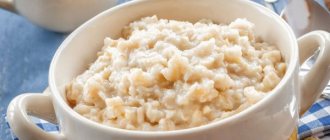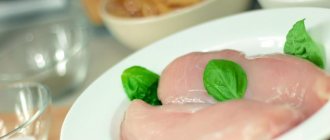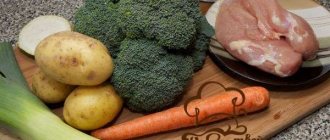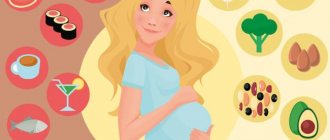During a healthy pregnancy, a woman tries to eat a lot of healthy nutritious foods, without limiting herself in anything. But immediately after the birth of the baby, she has to adhere to a strict diet. It would seem that vitamin-filled fruits, herbs, and vegetables will only benefit a nursing mother. But strict control is needed here. After all, the newborn’s digestive system is not yet formed and can react unpredictably to ordinary cucumbers or cabbage. What vegetables can be consumed, and in what form?
Recommendations for nutrition in the second month of breastfeeding
The development and well-being of the baby largely depends on the mother’s nutrition.
Breast milk is a natural and complete nutrition for a baby, providing it with all the necessary vitamins and minerals for physical and intellectual development. The nutritional properties of breast milk are always at their best, however, with a balanced and healthy diet for the mother, the composition of this liquid is enriched with nutrients.
The first month of breastfeeding is behind us, lactation, as a rule, becomes stable, and the diet of the nursing mother is not as strict as before. New products are gradually appearing on the menu, but they must still be hypoallergenic and not cause colic in the baby. Follow these dietary guidelines:
- eat fractionally - often and in small portions (up to 6 times a day);
- calorie intake increases by 20% compared to the pre-pregnancy period;
- ensure a proper drinking regime - drink 1.5–2 liters of liquid per day, not counting liquid food;
- preferred methods of cooking are boiling and stewing, baking is acceptable;
- the daily menu should include dairy products, meat or fish, soups or broths, vegetables and fruits, cereal products;
- plan your menu in such a way that you receive most of your daily carbohydrate intake in the first half of the day;
- Start introducing each product with a minimum serving size;
- Monitor the baby's reaction - if signs of allergies (rash, redness, dry skin) or digestive disorders (increased gas formation, colic, bowel problems) appear, exclude the product for 1 month.
Photo gallery: healthy foods in the diet of a nursing mother
Whole grain bread contains wholemeal flour and is rich in complex carbohydrates Vegetable oil should not be heated, it should be added to ready-made dishes, salads Green vegetables and fruits are usually allowed for a nursing mother at 2 months of breastfeeding Pears and apples, choose green and yellow varieties and bake in the oven A nursing mother can eat up to 8 quail eggs per week Chicory tastes like coffee, but does not contain caffeine Dairy products are rich in calcium, necessary for the development of the baby Porridge is recommended to be cooked in milk diluted with water Meat broth helps improve lactation Fish and meat are irreplaceable sources of animal protein
Table: what you can eat 2 months after giving birth
| Product group | Meat | Fish | Cereals, pasta | Dairy and fermented milk products | Beverages | Eggs | Fruits | Vegetables | Vegetable fats | Flour products | Leafy greens |
| Cooking methods | Cooking, stewing, baking | Cooking, stewing, baking | Boiled, as a side dish or as part of dishes | Pasteurized, ready to eat | Warm or at room temperature | Hard Boiled | Fresh, baked, pureed, compote | Boiled, stewed, baked | Without heat treatment | Ready to eat | Fresh or boiled as part of complex dishes |
| Preferred varieties | • turkey; •rabbit meat; • chicken; •beef. | • sea bass; • pollock; • cod; • pike perch; • hake. | • buckwheat; • rice; • corn grits; • oatmeal; • pasta made from durum wheat. | • milk; • cheese; • yogurt; • low-fat sour cream; • kefir; • butter • cottage cheese; • curdled milk; • fermented baked milk; | • Black tea; • green, white tea; • compotes; • chicory; • jelly. | • chicken; •quail. | • dried fruits; • pears; • bananas; • kiwi; • apples. | • celery; • green beans; • broccoli; • potato; • pumpkin • cauliflower; • zucchini; • carrot; • onion. | •sunflower; • olive; • soy; • pumpkin. | • bread; • drying; • Lenten cookies; • crackers; •bran bread; | • spinach; • green salad; • dill; • parsley. |
Undesirable foods for breastfeeding at 2 months
Citrus fruits often provoke allergies in babies, so eating them in the first months of breastfeeding is not recommended.
The digestive system of a 2-month-old baby is still quite sensitive to new varieties of foods in the mother’s diet. Even the most seemingly safe product can cause an allergy or food intolerance, so you need to start trying different types of food with minimal portions. However, there is a list of allergenic products that most often provoke problems with well-being in children. Prohibited during the GW period:
- cocoa;
- chocolate;
- citrus fruit;
- berries (strawberries, raspberries, sea buckthorn);
- nuts;
- seafood (except white meat fish).
Often, problems with a baby’s well-being are caused by store-bought products containing chemical additives and difficult-to-digest foods. These include:
- sweet carbonated drinks;
- alcohol;
- snacks (chips, crackers);
- semi-finished products;
- coffee;
- cakes and pastries with colored cream;
- fast food;
- sausages;
- margarine;
- mayonnaise;
- canned food;
- reconstituted juices.
It is not recommended to eat these types of food for a 2-month-old baby, especially if the baby or close family members are prone to allergies.
There are also products that specifically affect digestion, causing colic and increased gas formation in mothers and babies. At 2 months of age, babies should not try them; the optimal period for this is considered to be the age of 3 months, when digestive processes are improving and undesirable reactions to foods are observed less frequently than before. These include:
- White cabbage;
- grape;
- cucumbers;
- legumes;
- pearl barley and others.
Recommendations from experts
Breastfeeding experts do not recommend abusing confectionery sweets 2 months after birth
Well-known pediatrician Dr. Komarovsky advises nursing mothers to add variety to the menu, avoiding allergenic foods and controlling portion sizes. The doctor gives the following recommendations:
- avoid foods that negatively affect the taste of breast milk - hot spices, garlic;
- exclude foods that provoke colic in a child - white cabbage, for example;
- choose products with a low fat content, avoid butter creams, pork, cream, and do not overuse sour cream;
- Be sure to eat fruits and vegetables (up to 0.5 kg per day);
- The optimal drinks are juices from hypoallergenic vegetables and fruits diluted with water, tea, dried fruit compote, and dairy products of normal fat content.
2 months after giving birth, it is still too early to conduct food experiments, but Evgeniy Olegovich does not recommend going on a strict diet.
Make lists for healthy women who have normal stomach problems, etc. I don't see the point. In all other cases, when the mother has some kind of disease or intolerance to certain foods, she herself knows her “list” of unwanted and healthy foods. It is individual for everyone, so it is difficult to come up with a general list. We can only emphasize that a nursing mother has a chance to be more attentive to her health and finally listen to her body.
Naturally, mayonnaise and other so-called fast food products are far from natural/natural things, so we do not advise anyone to eat them. Citrus fruits are potential allergens, but again, there are women who tolerate them normally and this does not affect lactation in any way.
Razakhatskaya Natalya, international lactation consultant (IBCLC), babywearing consultant, coach
https://am-am.info/forum/forum-28/topic-36/page-1/
Video: Dr. Komarovsky’s recommendations on nutrition during breastfeeding
How to eat vegetables while breastfeeding
Vegetables should be eaten raw whenever possible. But you shouldn’t get carried away with a raw food diet, especially when the child is still very young. Raw vegetables are more difficult to digest. The most harmless methods of heat treatment are baking and boiling (especially steaming) . This allows you to preserve the benefits of vegetables to the maximum.
Don't forget about seasonality. Very often, early vegetables are processed so that ripening occurs faster. Imported vegetables can also be dangerous. They are very often processed in order to give them a marketable appearance. You can grow fresh herbs on the windowsill.
Breastfeeding is a happy and responsible period in the life of the baby and mother. It is through breast milk that a piece of her love and immunity is transferred from the mother to the baby. Proper nutrition, which is enriched with fruits and vegetables, will help restore the mother’s strength and give everything the child needs, and the baby will develop harmoniously.
Sample menu for 7 days
The best breakfast option for a nursing mother is porridge with cereals
A woman's diet during lactation should contain valuable nutrients - vitamins and minerals, amino acids, fatty acids and other nutrients necessary for the quality development of a two-month-old baby and the well-being of the mother. The following product groups are mandatory in the daily menu for breastfeeding:
- carbohydrate foods (cereals, cereals, bread) are necessary to replenish energy reserves and successful lactation;
- proteins (meat, fish, eggs, dairy products) – building material for the baby’s tissues and organs, necessary for high-quality metabolism and high metabolism, muscle growth and skeletal formation;
- food rich in fats (vegetable oil and butter) is required for skin elasticity, full functioning of the nervous system, functioning of internal organs, maintaining a woman’s hormonal levels, and restoring reproductive function after childbirth;
- products containing fiber, vitamins and minerals (vegetables and fruits, cereals, herbs) are necessary for easy digestion, prevention of constipation, high-quality metabolism, improved well-being, strengthened immunity;
- Calcium-containing products (milk, cheese, cottage cheese, herbs, fish) are required to strengthen the skeleton, tooth enamel, joints, muscle elasticity, beauty of skin, hair and nails.
The preferred methods of preparing dishes during the 2nd–3rd month of lactation remain boiling, stewing, and baking. Fresh fruits and vegetables that appear in the diet are also recommended to be heat treated. Fried, smoked, salted, canned foods are undesirable. It is recommended to cook soups in a second broth (drain the water from the pan with meat after boiling and add fresh water). Meat and fish are preferable to low-fat varieties. Porridges from the second month of breastfeeding can be cooked with the addition of milk in a 1:1 ratio with water. It is acceptable to add butter (5–10 g) and sweeteners (sugar, dried fruits). If a child is allergic to cow's milk protein, porridge continues to be cooked only in water without oil. From the second month of the baby’s life, low-fat sour cream may appear on the mother’s menu as an addition to first and second courses, or as a salad dressing. If mom wants something sweet, an alternative to forbidden chocolate, cakes and candies can be dried fruits, as well as relatively safe confectionery sweets - marshmallows, marshmallows, marmalade made from natural ingredients.
In the first months of my baby's life, I was afraid to eat many foods. My son reacted sensitively to any changes in my diet - he was bothered by colic until he was 3 months old. However, from the 2nd month of breastfeeding, I began to expand my menu. This was partly due to a decrease in the intensity of the baby’s colic, partly due to the fact that my body could no longer limit its nutritional needs. Of course, in the first month I ate mostly buckwheat, potatoes and chicken breast, sometimes noodles in meat broth, and dairy products. Only breakfast was “royal” - but she could afford a sandwich with cheese, porridge cooked in a mixture of milk and water. When I really wanted something sweet, I ate marshmallows and apples. And so, 2 months after giving birth, I finally started eating stewed vegetables, baked goods, complex dishes, salads, gradually returning to the prenatal menu. This had a positive effect on lactation - a feeding schedule appeared in our daily routine, the baby began to sleep more peacefully and filled up with milk faster. By the way, my diet became much more varied when the baby turned 3 months old and colic almost stopped bothering him. I’m still not sure whether it was necessary to limit the menu so strictly, because the baby still had a tummy ache. Perhaps nothing would have changed if the diet had been varied from the very beginning of breastfeeding. However, I believe that allergenic foods should definitely not be eaten until at least 3 months. Allergies can also be triggered by seemingly safe products. I didn't eat chocolate, citrus fruits, or strawberries for about 4-5 months after giving birth. In general, I believe that all their mother's babies are individual. Some of the mothers I know strictly adhered to the diet, like me, and the babies still had colic, and some ate everything in a row from the very birth of the baby, and there were no special problems with digestion.
Table: nursing mother's menu for the week
| First day | Second day | The third day | Fourth day | Fifth day | Sixth day | Seventh day | |
| Breakfast | • rice porridge with butter; • whole grain bread with cheese; • tea. | • curd pudding with semolina and sour cream; • whole grain bread with butter; • chicory. | • corn grits porridge with butter; • bread with cheese; • chicory. | • rolled oats porridge with butter; • whole grain bread with cottage cheese; • chicory. | • omelette with vegetables; • bread with cheese; • chicory. | • noodles with butter; • bran bread with cottage cheese; • chicory. | • liquid buckwheat porridge with butter; • bread with cheese; • chicory. |
| Snack | • apple; • compote. | • banana; • kefir. | • pear; • compote. | • apple; • fermented baked milk. | • banana; • kefir. | • pear; • yogurt. | • apple; • compote. |
| Dinner | • buckwheat soup with meat broth; • stewed meat with vegetables; • bran bread; • mashed potatoes; • chicory. | • soup with vegetables in chicken broth; • meat balls; • Rye bread; • stewed cauliflower; • compote. | • pickle with rice; • pilaf; • black bread; • compote. | • fish soup; • meat goulash with stewed vegetables; • Rye bread; • tea. | •vegetable salad with vegetable oil; • soup with meatballs; • black bread; • potatoes with stewed meat; • tea. | • stewed vegetables with vegetable oil; • buckwheat soup with meat broth; • bran bread; • potatoes stewed with meat; • tea. | • soup with dumplings in meat broth; • fish soufflé with vegetables; • black bread; • boiled pasta; • compote. |
| Afternoon snack | • fermented baked milk; • a rusk of white bread. | • yogurt; • lazy dumplings. | • jelly; • pancakes with sour cream. | • dried fruits compote; • hard biscuits. | • yogurt; • cottage cheese casserole. | • fermented baked milk; • marshmallows. | • jelly; • drying. |
| Dinner | • vermicelli; • chicken meatballs; • compote. | • mashed potatoes; • liver pancakes; • compote. | • cottage cheese casserole; • vegetable salad with vegetable oil; • kefir. | • boiled potatoes; • chicken breast with stewed vegetables and vegetable oil; • kefir. | • lazy dumplings with sour cream; • vegetable salad with vegetable oil; • compote. | • stewed fish; • vegetable stew; • kefir. | • boiled rice; • meatballs; • tea. |
What vegetables are allowed in the diet?
- Carrot. It has a good effect on the condition of the mother’s skin and hair, strengthens blood vessels and bones, helps maintain heart health, and increases hemoglobin levels. The risk of developing an allergic reaction in a baby due to the mother’s consumption of carrots is high; it should be introduced no earlier than a month after the birth of the baby, first in boiled form.
- Potato. Contains a set of useful microelements in an easily digestible form, including calcium, zinc, magnesium, phosphorus, iron. The longer a vegetable is stored, the less healthy it becomes. Old tubers accumulate a large amount of a toxic substance - solanine. These potatoes are green in color. They should not be eaten, especially by a nursing mother. In the spring, it is better to completely avoid eating last year’s harvest.
- Tomatoes. Helps normalize the nervous system and strengthen the immune system, prevent constipation. In winter, fruits sometimes contain large amounts of nitrates, which are dangerous for a nursing mother and baby. These tomatoes are distinguished by too thick pale skin and light flesh.
- Cucumbers. Low-calorie, well suited for breastfeeding women who control their weight. They have a laxative and diuretic effect, improve digestion and metabolism. But they cause flatulence, and you should not consume them in large quantities during lactation.
- Bell pepper. Helps strengthen blood vessels, normalize sleep, contains calcium necessary for the formation of the baby’s bone tissue, and supports the immune system.
- Eggplant. They prevent putrefaction processes in the body, help with constipation, and improve heart function.
- Beet. Promotes the removal of toxins and breakdown products, strengthens the immune system, improves digestion, and has a mild laxative effect.
- Broccoli. A dietary product rich in beneficial folic acid. Improves the blood composition, condition of the skin and hair of a nursing mother, protects the walls of blood vessels, strengthens the immune system.
- Cauliflower. Prevents the appearance of gastritis and ulcers, cleanses the body, improves intestinal microflora, strengthens bones. Part of the group of low-allergenic products, the first vegetable complementary foods are often recommended to start with cauliflower and broccoli.
- Celery. Prevents the formation of blood clots, strengthens teeth and bones, promotes nail growth, stimulates brain function, improves memory.
- Zucchini. Supports liver function, removes toxins from the gastrointestinal tract, has a diuretic effect, thanks to which it helps get rid of edema.
The above list can be adjusted depending on the taste preferences of the nursing mother.
Video: dishes for a nursing mother
The diet of a nursing mother 2 months after giving birth becomes a little more varied than before. She can try new foods, observing the baby’s reaction, and eat complex dishes made from approved ingredients. However, the list of prohibited and undesirable foods for breastfeeding is still relevant, and the menu should be balanced.
- Author: Lyudmila Morozova
Greetings! My name is Lyudmila, I’m 32 years old, I live in Orel. I have two beautiful children, I am an economist by education, and a journalist, writer, marketer by vocation) Rate the article:
- 5
- 4
- 3
- 2
- 1
(18 votes, average: 4.6 out of 5)
Share with your friends!










